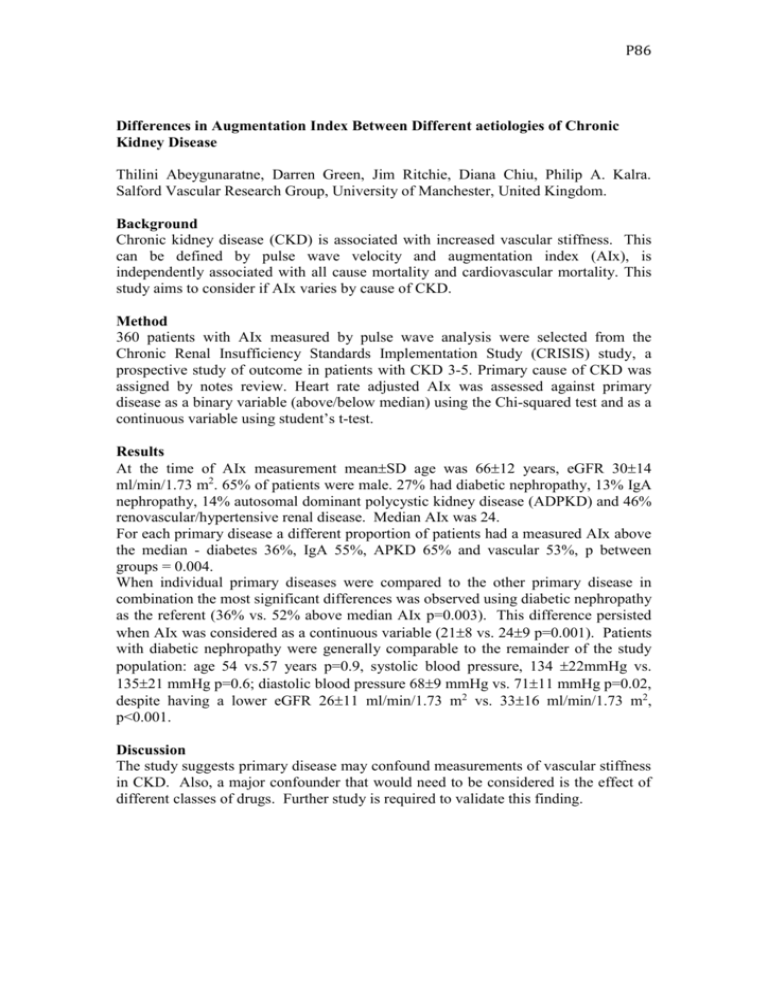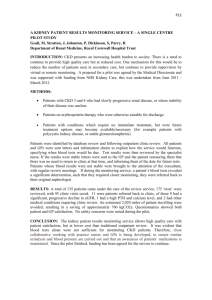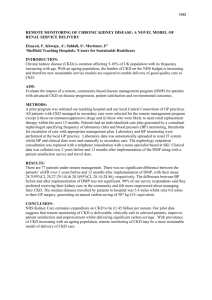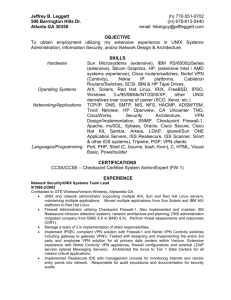Differences in Augmentation Index Between Different aetiologies of
advertisement

P86 Differences in Augmentation Index Between Different aetiologies of Chronic Kidney Disease Thilini Abeygunaratne, Darren Green, Jim Ritchie, Diana Chiu, Philip A. Kalra. Salford Vascular Research Group, University of Manchester, United Kingdom. Background Chronic kidney disease (CKD) is associated with increased vascular stiffness. This can be defined by pulse wave velocity and augmentation index (AIx), is independently associated with all cause mortality and cardiovascular mortality. This study aims to consider if AIx varies by cause of CKD. Method 360 patients with AIx measured by pulse wave analysis were selected from the Chronic Renal Insufficiency Standards Implementation Study (CRISIS) study, a prospective study of outcome in patients with CKD 3-5. Primary cause of CKD was assigned by notes review. Heart rate adjusted AIx was assessed against primary disease as a binary variable (above/below median) using the Chi-squared test and as a continuous variable using student’s t-test. Results At the time of AIx measurement meanSD age was 6612 years, eGFR 3014 ml/min/1.73 m2. 65% of patients were male. 27% had diabetic nephropathy, 13% IgA nephropathy, 14% autosomal dominant polycystic kidney disease (ADPKD) and 46% renovascular/hypertensive renal disease. Median AIx was 24. For each primary disease a different proportion of patients had a measured AIx above the median - diabetes 36%, IgA 55%, APKD 65% and vascular 53%, p between groups = 0.004. When individual primary diseases were compared to the other primary disease in combination the most significant differences was observed using diabetic nephropathy as the referent (36% vs. 52% above median AIx p=0.003). This difference persisted when AIx was considered as a continuous variable (218 vs. 249 p=0.001). Patients with diabetic nephropathy were generally comparable to the remainder of the study population: age 54 vs.57 years p=0.9, systolic blood pressure, 134 22mmHg vs. 13521 mmHg p=0.6; diastolic blood pressure 689 mmHg vs. 7111 mmHg p=0.02, despite having a lower eGFR 2611 ml/min/1.73 m2 vs. 3316 ml/min/1.73 m2, p<0.001. Discussion The study suggests primary disease may confound measurements of vascular stiffness in CKD. Also, a major confounder that would need to be considered is the effect of different classes of drugs. Further study is required to validate this finding.











